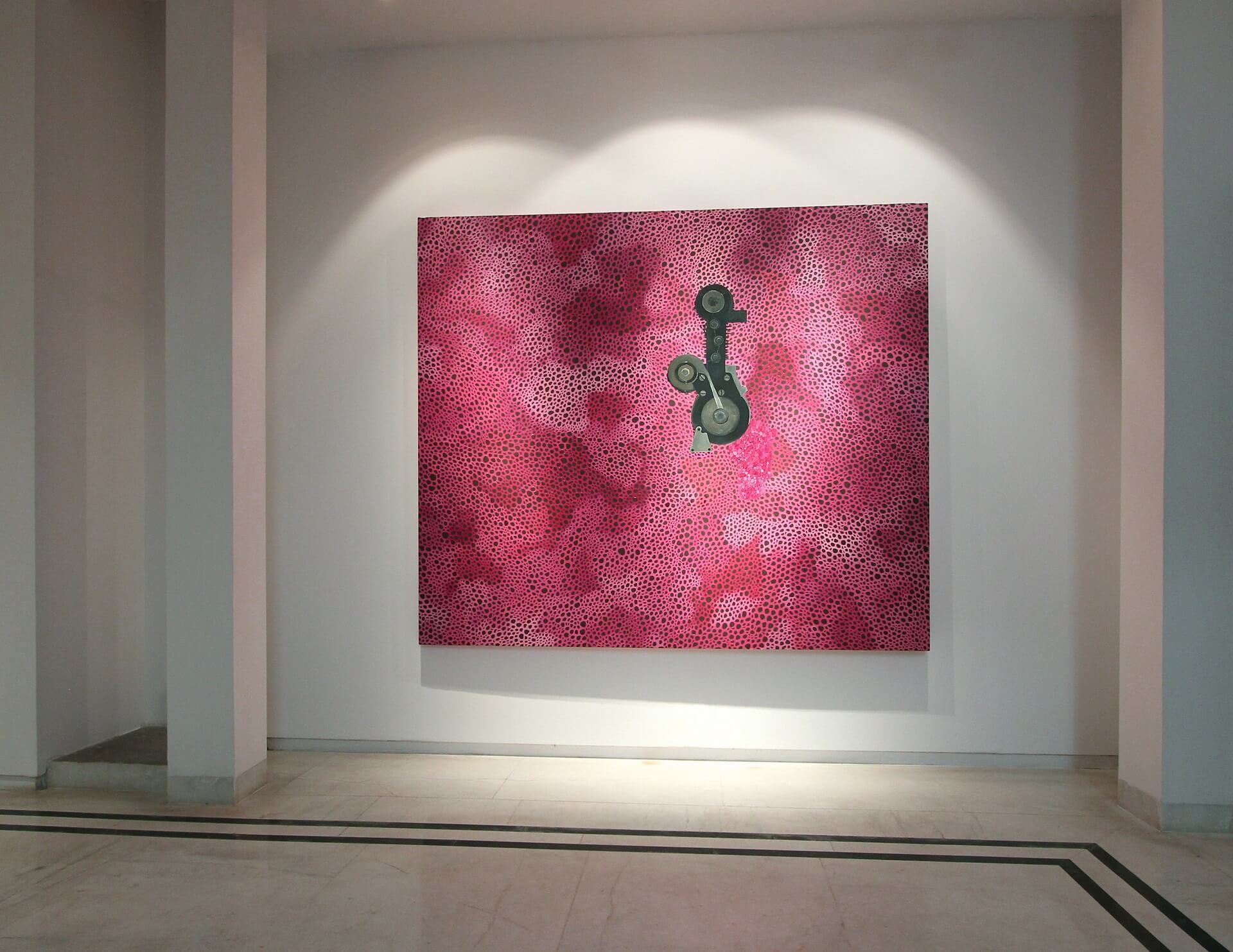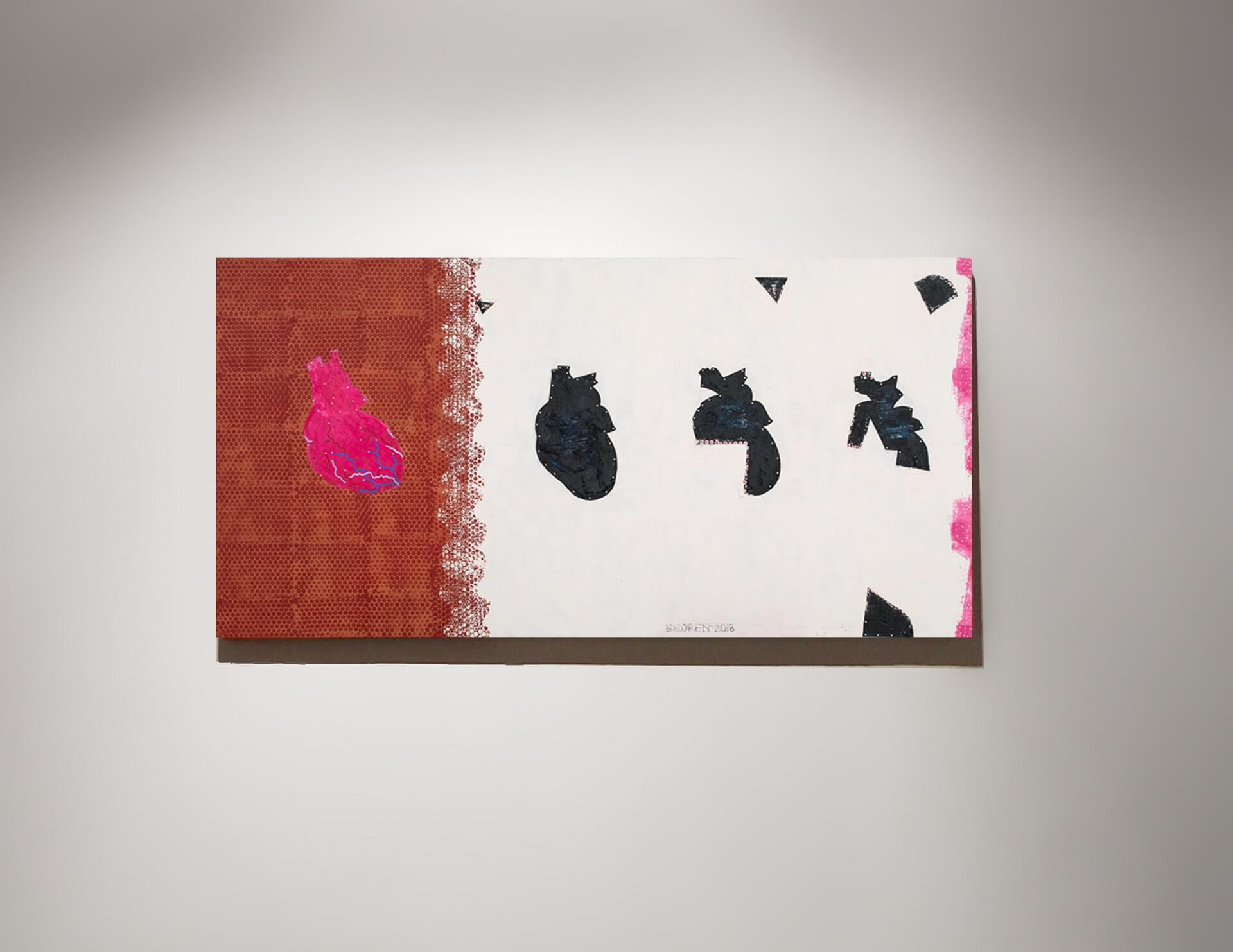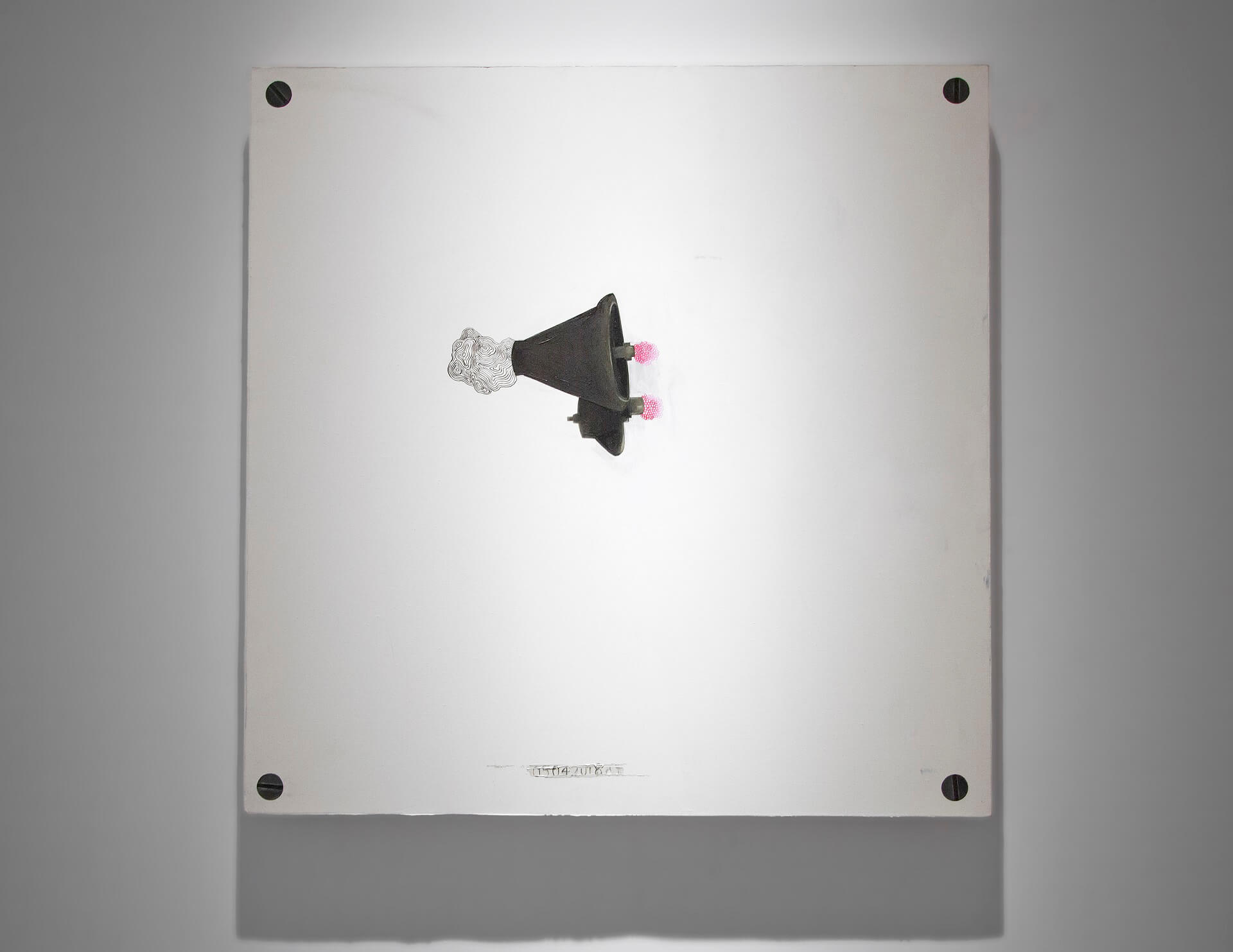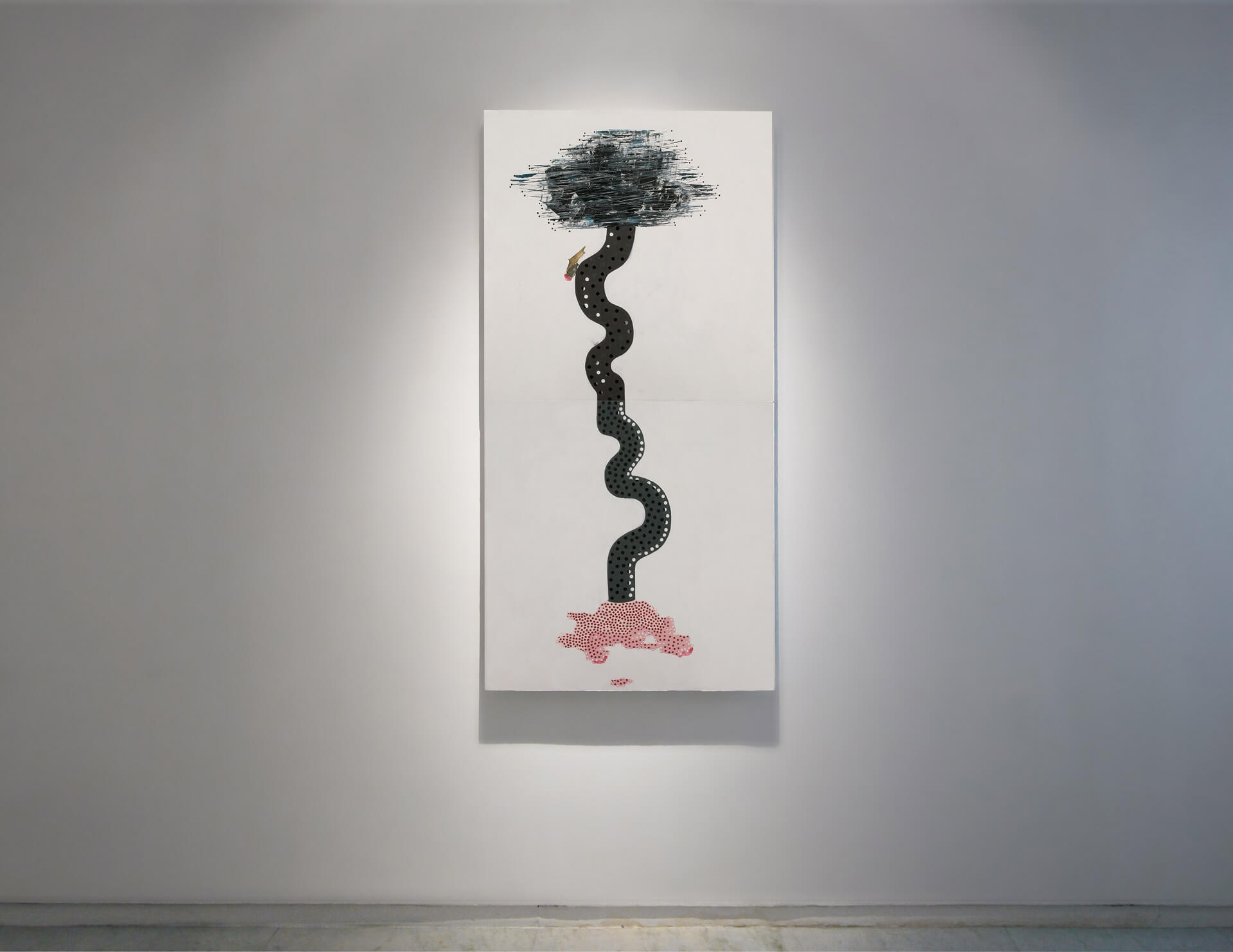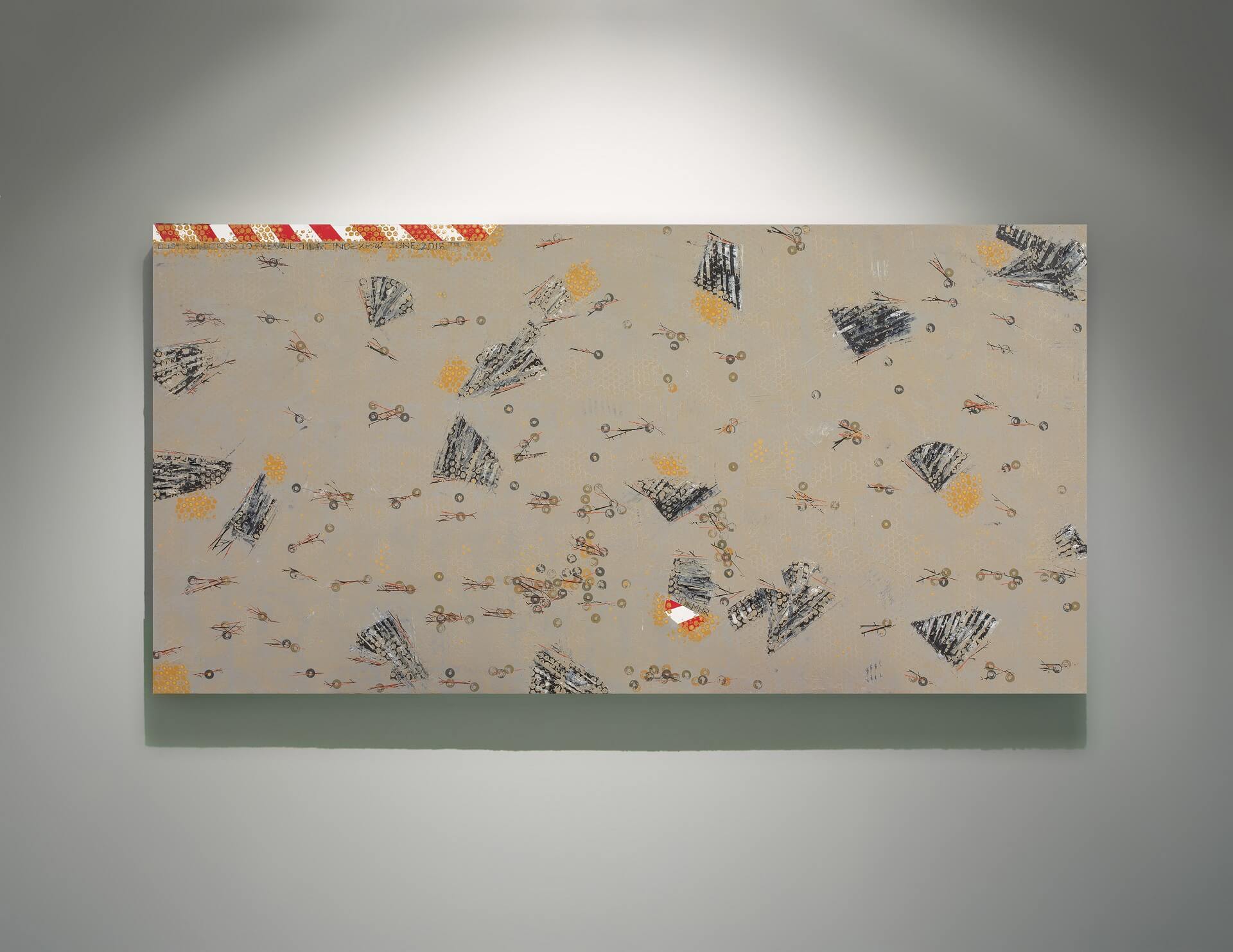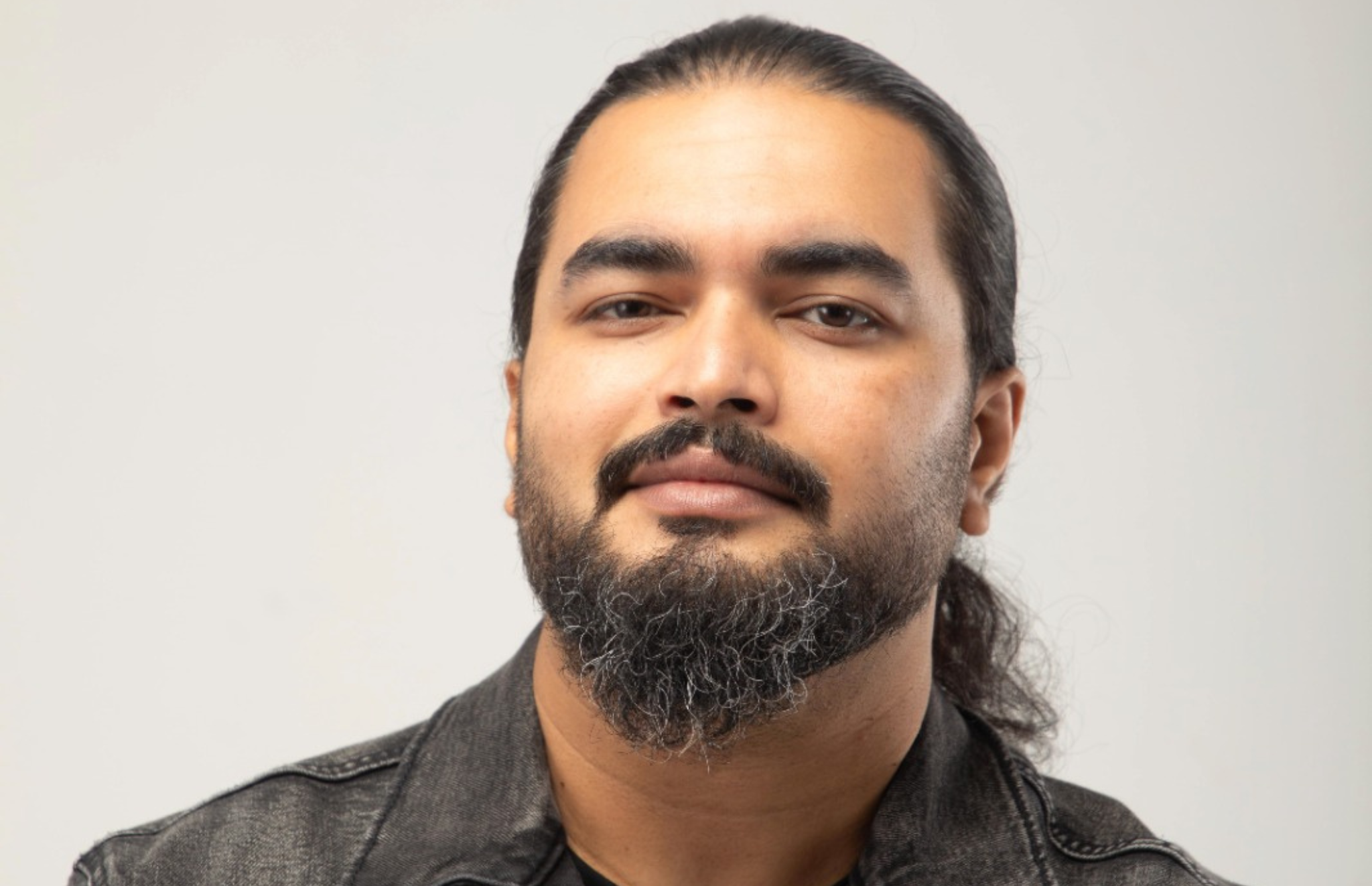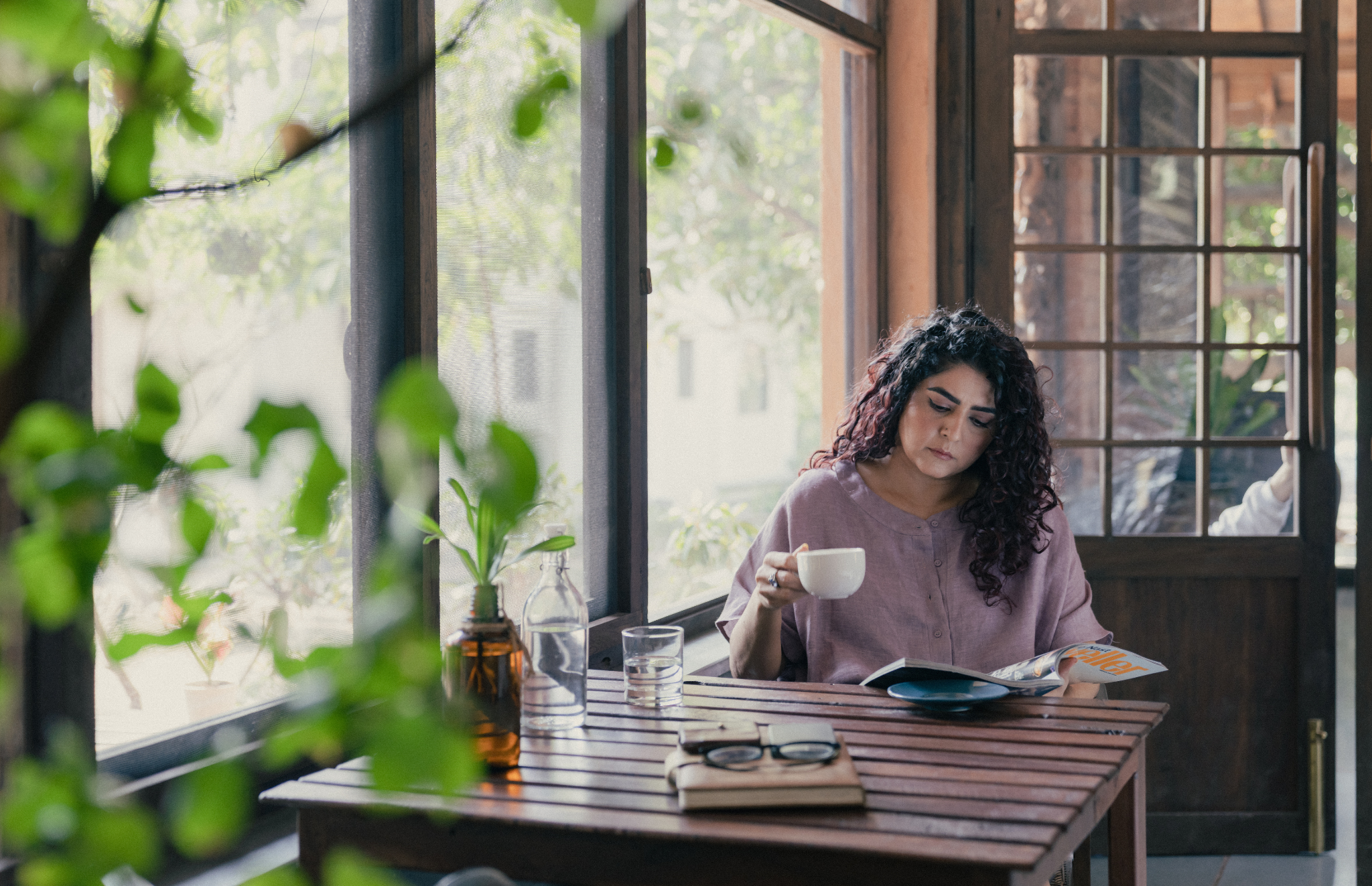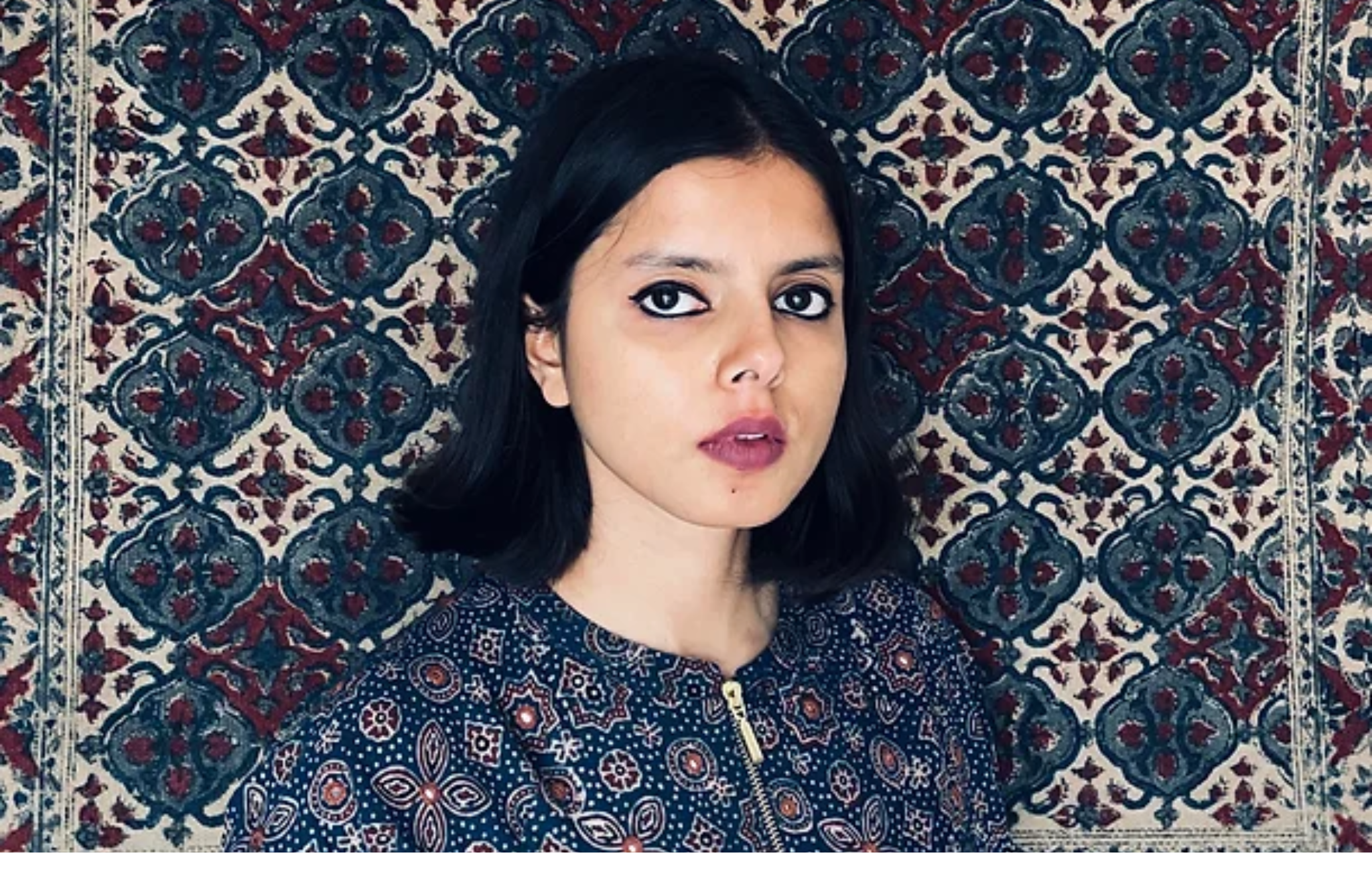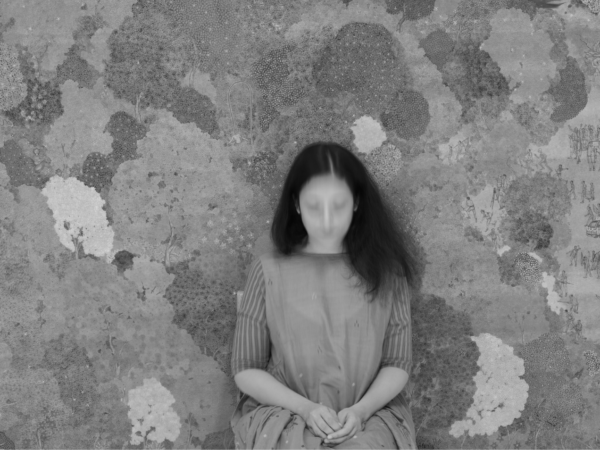Delhi-based artist Anjum Singh is best known for her use of and fascination with bright reds, pinks and oranges. This deep-hued palette that dominates Singh’s canvases is also a testament to her visceral engagement with the body and biological lived experience in her latest body of work. The artist talks to us about her recent work, and its engagement with the cellular and biological aspect of being that is translated onto her canvas through her visual language.
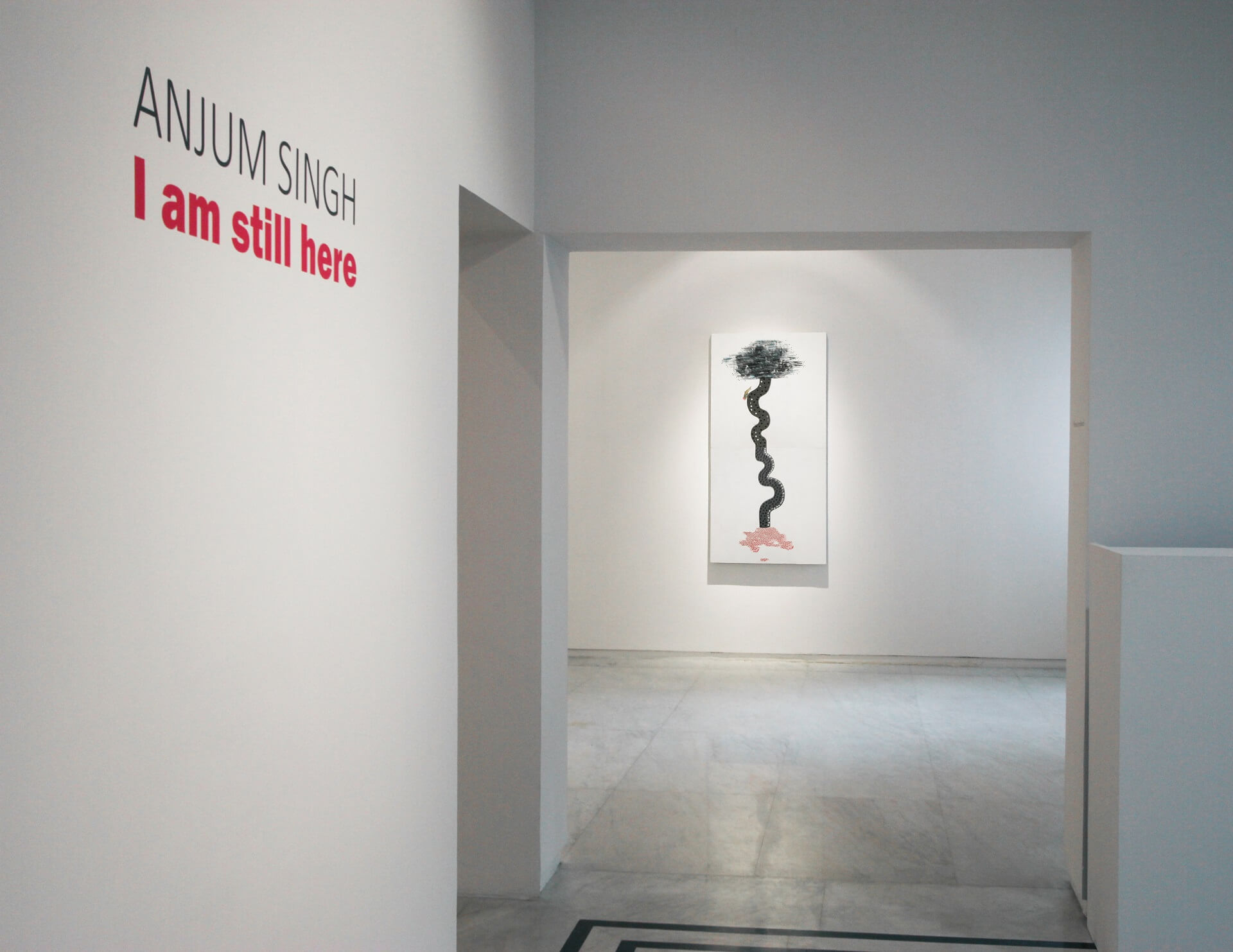
Shalini Passi: As the daughter of two of the nation’s most respected artists – the living culmination of their talents – you have often been referred to as a protege. did you find this pressuring as a young artist? How did you manage to develop your own bold and unique style in a household of such strong creative minds?
Anjum Singh: While growing up, art/painting was, in my eyes, a very commonplace activity. I used to think this is how it is everywhere, because almost everyone who came to the house was either an artist themselves or in some way associated with it. It was only natural that I took up art but I remember having no particular ambition of wanting to become an ‘artist’. This was something that one simply did. It is over the years, in art schools that one realizes that this is pretty much what I could do. While phrases like ‘hard work’ and ‘no shortcuts were hammered into me, individuality of expression and free dialogue was greatly encouraged. Yes, for many years I felt substantial pressure because of my parents being in the same profession – at the forefront of it, no less! And my parents recognized it as well, and perhaps that is the reason they kept sending me away for my art education – where they hoped I would be free of this pressure and evolve on my own. And I think it worked well for me.
Shalini Passi: Your work is deeply autobiographical, which I greatly admire. Can you tell us a little bit about this process? Is it challenging, or cathartic – or perhaps both?
Anjum Singh: Cancer completely engulfed my life since 2014. And I realized it was impossible to keep my art and life separate. All this automatically came into my work; it was like writing a diary of experiences both emotional and physical. It was not challenging at all, it was very natural and free flowing, and deeply satisfying.
Shalini Passi: Your latest exhibition focuses heavily on the human body and its complex internal systems, including cellular structures, blood samples, and the anatomical heart; where do you find the balance between figurative painting and abstraction?
Anjum Singh: I do not think so much about whether my work is abstract, or figurative, or both, or neither; but I know that placing a recognizable form/word is a means to ground the work for myself. Also, from a pure painterly point of view, I have always found the tension between abstract/free flowing forms and spaces and a recognizable/definite object/form very exciting.
Shalini Passi: I love the bold use of colour in these latest works – particularly the bright pinks and rusted red hues; can you talk to us about the use of colour in these pieces?
Anjum Singh: Many times, I start a painting with the desire to paint a certain colour and the sheer joy of its intensity on paper or canvas. Reds and rusts also naturally connect to the human body and my current interests and concerns.
Shalini Passi: What are you working on at the moment?
Anjum Singh: I could not paint for a major part of 2019 because of my health but now I have picked up where I left off. Paintings like Dust Storm, Alien and Still against white are the last works I did in this body of work and I felt that they had taken a slightly different direction, especially in the way they were painted, so I continued from that point.
Anjum Singh has exhibited in numerous group and solo exhibitions across major galleries in India such as Vadehra Gallery and Talwar Gallery as well as galleries in the USA, Austria, Egypt, and Australia. Her latest solo exhibition I am still here is on display until January 4, 2020 at the Talwar Gallery, New Delhi, India.


